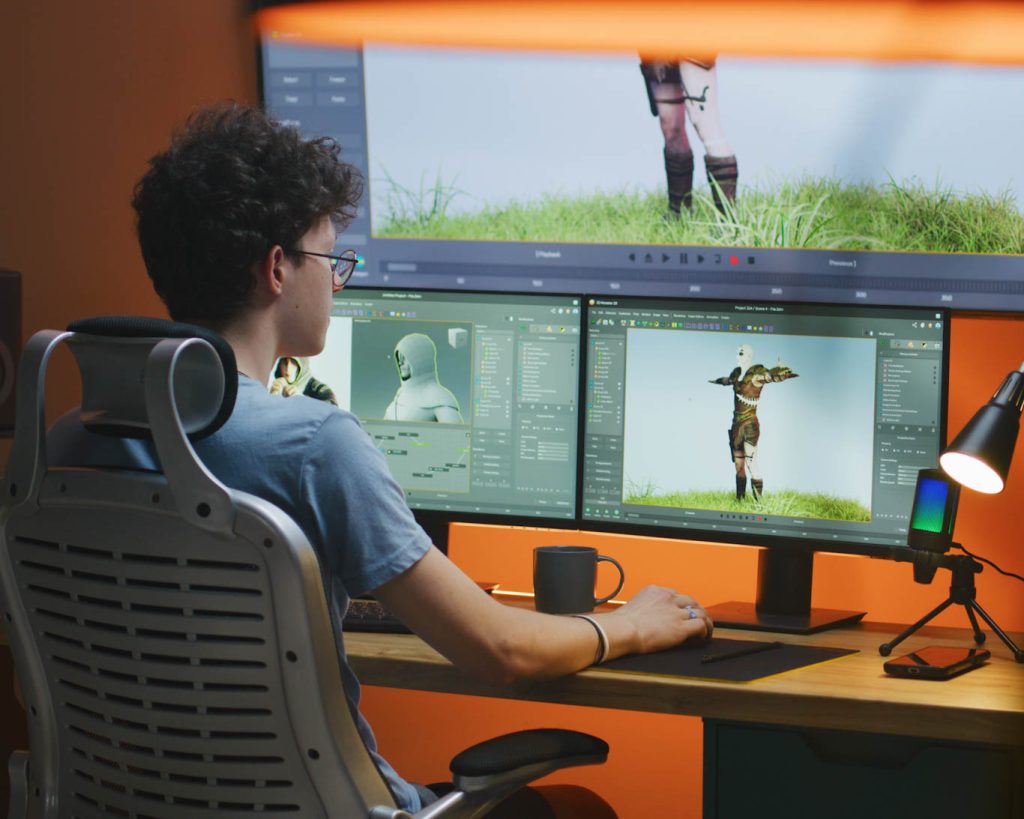At Cineshare, based in Finland, the team, led by Pekka Varis, is innovating the realm of character animation and virtual production. Their focus is on addressing technical challenges that arise in achieving high visual quality during real-time processes, such as rendering volumetric clouds for broadcast TV and managing AI avatars efficiently.
Real-Time Weather Visualization
Cineshare has collaborated with YLE, Finland’s national broadcaster, to develop live weather visualizations. The process begins with cloud formations generated in Embergen, which are then exported as VDB (Volume Database) files. Although VDB files offer efficient storage for volumetric data, they are cumbersome, often requiring extensive GPU memory for manipulation.
To enhance their workflow, Cineshare adopted NVIDIA Omniverse’s Universal Scene Description (USD) framework, enabling simultaneous collaboration among artists. This setup, combined with Dell Precision 3680 workstations equipped with NVIDIA RTX 6000 Ada GPUs, allows real-time updates to lighting and particle effects. Varis notes, “NVIDIA Omniverse transformed how we handle these complex simulations. Now, everything updates live, enabling instant refinements during client reviews.”
Virtual Reality Adaptation
After successfully implementing real-time simulations, Cineshare faced a new challenge: adapting their work for virtual reality (VR), which requires high frame rates to ensure user comfort. The team dedicated three months to optimizing their pipeline, allowing users to explore storm systems in VR with dynamic weather effects. The integration of Embergen, Unreal Engine, and Varjo VR support has been crucial for this endeavor.
Advancements in Character Creation
While weather visualization has pushed the boundaries of real-time graphics, Cineshare’s primary focus remains on character animation. As an early adopter of Omniverse, Varis has been instrumental in creating workflows that streamline character development and rendering across multiple tools. The ability to update animations live using the USD framework has significantly improved their production capabilities.
Utilizing Dell workstations with NVIDIA graphics cards, the studio has achieved 120 FPS with subsurface scattering skin shaders, enabling dynamic rendering of characters, including realistic hair and skin textures that previously required offline rendering. Varis emphasizes that this capability accelerates iteration on character details.
Integrating AI into Workflows
Cineshare’s latest project involves the incorporation of NVIDIA’s Avatar Cloud Engine (ACE) into their character pipeline. They have implemented an ACE avatar through Unreal Engine’s Pixel Streaming but found that current deployments necessitate a dedicated GPU instance for every user, complicating maintenance and increasing costs.
To overcome this, Cineshare is exploring on-premises solutions using the Dell Precision workstations equipped with RTX 6000 Ada’s 48GB VRAM, allowing them to run large language models locally for avatar interactions. Varis highlights that local processing enhances control and provides real-time guidance, improving productivity without the latency of cloud dependencies.
Future Directions
Looking ahead, Cineshare aims to blend real-time rendering, collaborative workflows via Omniverse, and local AI processing into an integrated production environment. Varis notes that each project presents unique technical challenges, but with a unified platform, the team can build on prior solutions rather than starting over. Their ongoing efforts exemplify how modern GPU technology and collaborative platforms are expanding the possibilities within real-time graphics.
Additionally, Cineshare has launched their first software as a service (SaaS) product, Omniverse Easy Start, marking another step in their technological advancements.

